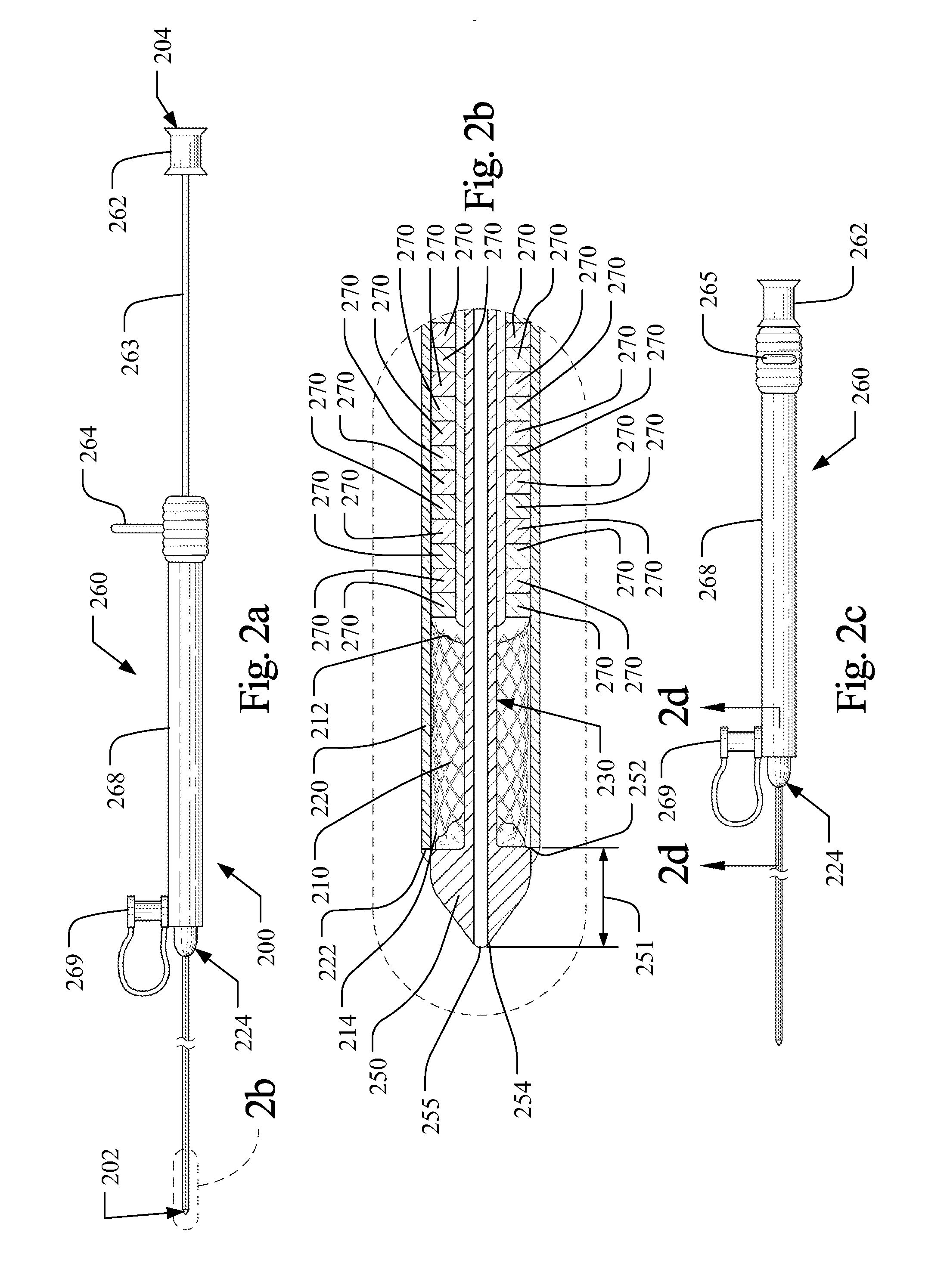Delivery system with low longitudinal compressibility
a delivery system and longitudinal compression technology, applied in the field of medical devices, can solve the problems of not generally compressible, increased risk of coronary bypass surgery, and a long recovery time for patients, and achieve the effect of precise placement of implantable medical devices
- Summary
- Abstract
- Description
- Claims
- Application Information
AI Technical Summary
Benefits of technology
Problems solved by technology
Method used
Image
Examples
Embodiment Construction
[0039]The term “axial” refers to the lengthwise direction 1 between the distal end 102 and the proximal end 104 of an implantable medical device delivery system 100. The axial direction is aligned with a central axis of the delivery system as shown in the Figures, and denoted as line x-x in FIG. 6(b). The term “distal” and variations thereof refer to the position or orientation relative to the distal end 102, 202 of an implantable medical device delivery system, which is configured to receive a guidewire and be inserted into a patient's vasculature, while the term “proximal” and variations thereof refer to the position or orientation relative to the proximal end 104, 204 of the delivery system 100, 200, as shown in FIGS. 1(a) and 2(a). The term implantable medical device refers to medical devices capable of being implanted within a human being including, for example and without limitation, self-expanding stents, balloon expanding stents, coils, filters, valves, baskets, and endovasc...
PUM
 Login to View More
Login to View More Abstract
Description
Claims
Application Information
 Login to View More
Login to View More - R&D
- Intellectual Property
- Life Sciences
- Materials
- Tech Scout
- Unparalleled Data Quality
- Higher Quality Content
- 60% Fewer Hallucinations
Browse by: Latest US Patents, China's latest patents, Technical Efficacy Thesaurus, Application Domain, Technology Topic, Popular Technical Reports.
© 2025 PatSnap. All rights reserved.Legal|Privacy policy|Modern Slavery Act Transparency Statement|Sitemap|About US| Contact US: help@patsnap.com



